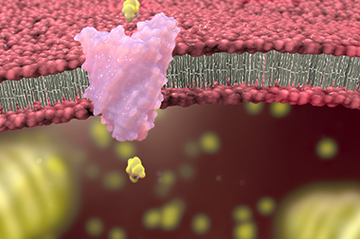Using Genomic Biology to Study Pet Aging
Kelly S. Swanson PhD
University of Illinois, Urbana, IL USA
Overview
30-40% of the pet population are seniors and, like humans, the physiological changes of aging increase the risk of chronic disease development. This presentation covers advances in genomic biology and technology that can help increase understanding of the aging process, identify mechanisms by which age-related illnesses occur, and design more targeted prophylactics and/or therapeutics.
Key points
- Genomics has come a long way from just working with DNA. Analyzing mRNA transcripts can lead to insights about which genes are turned on or off under a spectrum of health conditions.
- The utility of genomics is that the technology can work with small sample sizes and specific biomarkers for early detection, diagnosis, prognosis, tracking and treatment.
- Examples of mRNA studies that have improved understanding of aging at the molecular level:
- Profiles of mRNA expression in cerebral cortex tissue between young vs geriatric dogs showed that 963 genes altered with age and were associated with increased inflammation and protein folding, and decreased neuropeptide signaling and synaptic transmission (Swanson et al., 2009).
- Studies on circulating neutrophil-related mRNA expression of growing puppies, young adult dogs and senior dogs showed that older dogs had reduced phagocytic ability (Hall et al., 2010) which is related to decreased immunity.
- A study of myocardial mRNA expression of geriatric cats versus young cats showed decreased mRNA expression of inflammatory cytokines and genes for extracellular matrix remodeling in older, female cats (Fonfara et al., 2015).
- A study of mRNA expression in dogs with diseased joints showed altered cytokines levels among dogs with disease and older dogs (Riggio et al., 2014).
- Many genomics studies have increased understanding of nutritional impacts on mRNA in healthy aging, weight maintenance and metabolism, and joint health.
Clinical relevance
A key component of a senior care programs is preventive health, including early disease detection and treatment. A key challenge in both humans and pets is detecting these, and other detrimental changes, in a noninvasive manner so that intervention can begin early in the disease process. Genomics can help “see the unseen.”
This document contains summaries of all presentations from the Companion Animal Nutrition Summit, held May 3-5, 2018 in Charleston, South Carolina. Please note that these summaries represent overviews of the presentations and may include opinions and research of presenters, which do not necessarily reflect those of the Nestlé Purina Petcare Company.
Produced by the Purina Institute, May 21, 2018


